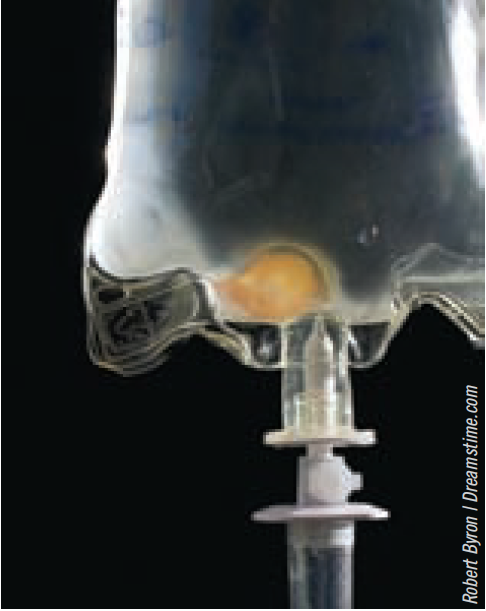
This content was published in 2011. We do not recommend that you take any clinical decisions based on this information without first ensuring you have checked the latest guidance.
A: Limited evidence suggests that potassium chloride may, with caution, be added safely to subcutaneous infusions, although the recommended concentrations of potassium chloride used are variable and range from 10mmol/L to 40mmol/L.
Given that only two studies have evaluated this issue, and that potassium can be an irritant, it would seem prudent to be cautious when adding potassium chloride to subcutaneous infusion fluids.
The subcutaneous route is not appropriate for the administration of large amounts of potassium or for treating severe hypokalaemia.
It would be good practice to use readymixed infusion solutions containing potassium although it should be noted that these infusion bags are not licensed for subcutaneous administration. Local policies on the subcutaneous administration of fluids should be consulted, if available.
A 0.2% strength potassium chloride in saline infusion bag is commonly available. This contains 2g (27mmol) of potassium per litre and would seem a reasonable strength to give subcutaneously in practice. One published study of subcutaneous potassium administration used 34mmol/L safely in 67 patients and a second 58-patient study used 20–40mmol/L of potassium chloride. Various concentrations have been used anecdotally, but not containing greater than 0.3% potassium chloride (equivalent to 40mmol/L of potassium).
Repeated measurements of plasmapotassium and electrolyte levels are necessary as with intravenous fluid replacement therapy.
This FAQ is taken from a “Medicines Q&A” produced by UK Medicines Information. The full document, including references, is available from www.nelm.nhs.uk (prepared 2 December 2010).

